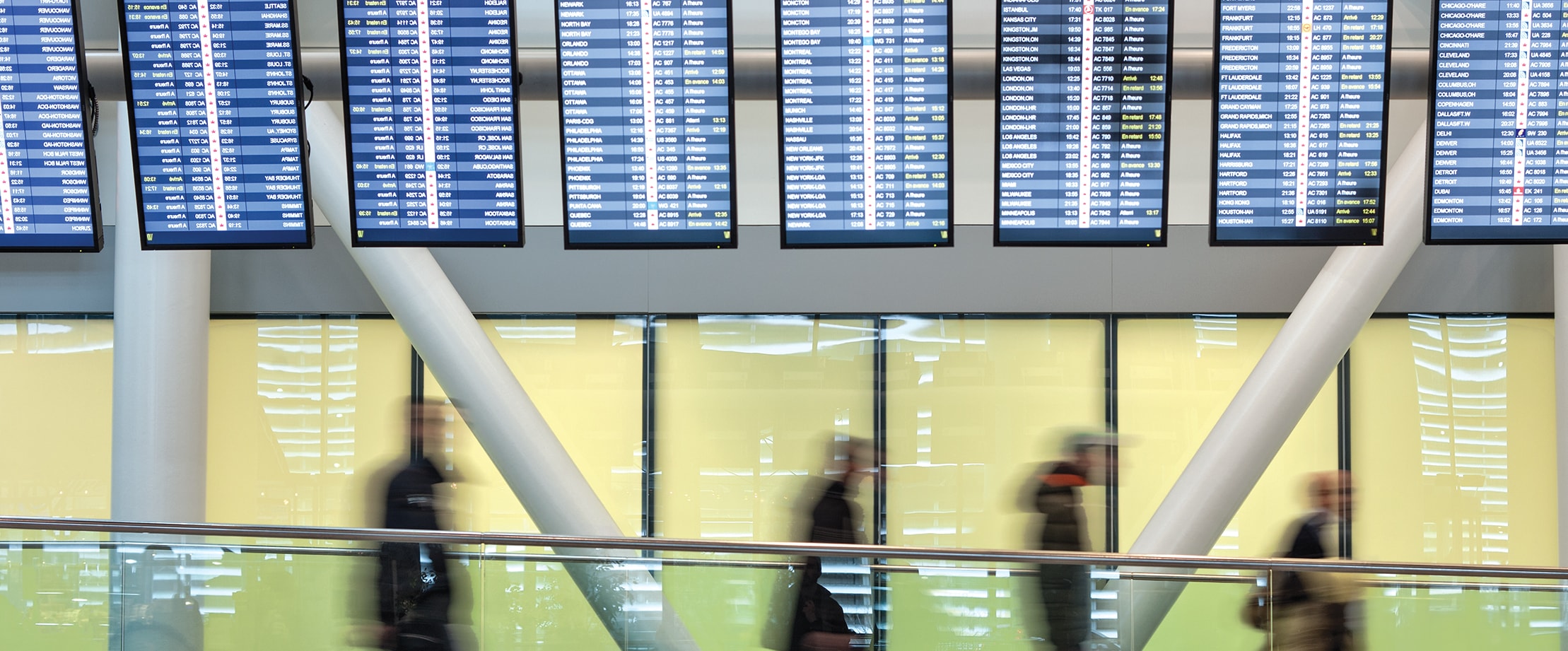For today’s air traveller, the journey begins long before the airport – with a bag by the door, a boarding pass downloading and a ride booked on a mobile app. And whether a trip entails a flight across the country or to the far side of the globe, it ends only with a traveller’s return to the point of origin. We call it home to home.
From Home to Home
Most of us are used to downloading our boarding passes well ahead of a flight time. Soon you’ll also be able to print out luggage tags before you’ve left your home or office – so when you arrive at Toronto Pearson, all you’ll have to do is drop your bags at a designated point and carry on through security.
But what if checking in from home could also prompt an automatic booking with a preferred limo, taxi or ride-sharing service – with all the details confirmed and updated on your phone? And maybe the transaction could trigger an order to your favourite coffee place in Terminal 1, so your usual latte or cappuccino will be ready as you walk to the gate. Or how about when you fly back to Toronto? What if the clothes you dropped off at the dry cleaner’s in the terminal could be waiting at the gate as you disembark from the plane? Or when you head to your car, wouldn't it be great if there was a box of pre-ordered groceries waiting in the parking area, so you didn’t have to go home to an empty fridge?

These are the kinds of scenarios being explored by Toronto Pearson’s home-to-home travel team. As people embrace digitally enabled convenience in all areas of their lives, from mobile banking to online shopping to video on demand, there’s a huge opportunity to rethink the passenger experience. Where we once thought of air travel as flying from airport to airport, we’re increasingly seeing it as an end-to-end journey that only concludes when you return to the starting point.
This thinking doesn’t just apply to passengers starting out from Toronto Pearson. We’re looking at ways to track and support connecting passengers as well, so we can welcome them personally on arrival and guide them seamlessly through our terminals – with helpful prompts on their smartphones – and on to the next stage in their journeys. We’ve already begun developing a pilot program with one of our international carriers, working out how to share relevant flight data and passenger profiles – subject, of course, to strict privacy and data security protocols.
Right now, home-to-home for most travellers is an intriguing idea. But soon it will simply be expected. And Toronto Pearson will be in the lead, working to deliver the optimum travel experience – before people even walk out their front doors.
1,500 electronic displays update passengers on flight departures and arrivals, baggage delivery and other information as they move through our terminals.

The Data-Driven Airport
Maintaining a consistent and reliable flow of passengers, baggage and aircraft through Toronto Pearson requires agile decision-making informed by up-to-the-minute data. So to ensure we’re supporting our operations with the best available reporting and analytics, the GTAA’s technology team has been sharpening our capabilities in enterprise data management (EDM).
In the past, like many large organizations, we supplemented our automated management systems with manual processes and some third-party analysis. Integrating data from multiple sources took a big collective effort, but it paid off. By analyzing the performance of baggage systems, for example, we were able to increase capacity by 30 per cent. Similarly, we spotted potential efficiency gains during winter operations that allowed us to increase runway capacity by 40 per cent and raise throughput at the deicing facility by 20 per cent. Improvements like these allowed us to defer major capital expenditures and realize the maximum value from Toronto Pearson’s existing infrastructure. But the downside was that they were largely one-time solutions to specific problems. It was difficult to take the results of one project and overlay them on another set of data.
As we evolve to EDM, we’re able to look across operational areas and spot opportunities that only become apparent once you can integrate all relevant data in a single view. If we’re considering, for instance, whether to relocate an air carrier to a different part of a terminal, we need to know what gates are available, if there are enough check-in counters, if the baggage system has sufficient capacity and so on. Armed with the right data on passenger traffic and flight schedules – not just historically, but monitoring activity in real time – we gain a holistic understanding of immediate challenges. Even more importantly, we can predict future patterns and adjust our decisions and investments accordingly.
The power of predictive modelling is just one dimension of our overall technology strategy at Toronto Pearson. We have many areas of focus: supporting collaborative decision-making among key airport players; tracking vehicles and equipment via the Internet of Things; providing digitally enabled services to enhance the passenger experience; and much more. The underlying systems and architecture are complex, but the goal is simple: to create a data-driven environment in which every minute and every dollar invested delivers optimum value – to passengers, to our airline customers and to our own bottom line.
Learn more about how we connect Canada to the rest of the globe
Adding destinations. Opening up new markets. Attracting tourism and investment. Supporting travellers from their homes, around the globe and back again. And always keeping an eye on the horizon.
